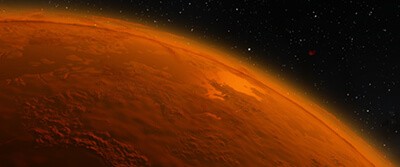Surface of Mars Reveals Granular Flows

By Mae Pyer
Researchers recently obtained new images of dark, downward-sloping surface features on Mars known as Recurring Slope Lineae (RSL). Originally thought to be flowing water, these features have been identified as granular flows, supporting research pointing to a lack of liquid water on the planet’s surface.
High-Tech Imaging Results
Images for this project were taken using a Digital Terrain Model from High Resolution Imaging Science Experiment (HiRISE). HiRISE generates higher-resolution images than those taken for previous space exploration research, allowing scientists to study surface structures like granular flows in greater detail.
At first glance, RSL resemble flowing water, but with image analysis, researchers confirmed that they are actually flows of sand and dust. The tilt of the planet’s axis and its elliptical orbit around the sun create seasons of varying lengths and allow its surface features to change throughout the year. The RSL appear to grow during warm seasons and recede during colder periods.
Although it’s possible that water is moving under the surface of RSL sites and is being released to initiate a granular flow (the leading hypothesis) that has not been officially confirmed. Even if water does initiate the process, the planet would still be considered very dry and the amount of water insufficient to support life. Water on Mars mostly occurs in the form of ice caps and frosts, likely because surface water is difficult to maintain due to its cold temperatures.
These new findings ultimately change our knowledge and understanding of the surface features on Mars. Scientists will continue their search for evidence of past life and water on the planet as well as potential new sources for both in the future. With specialized resources that produce high-resolution images, researchers will continue to unravel the mysteries of the big red planet.
Discussion Questions
- What differences in appearance would help determine whether a solid or liquid is flowing? How might scientists make that assessment about the surface of Mars using only images?
- What physical characteristics would Mars need in order to support human life? Discuss what makes Earth livable in comparison to Mars.
- Think about and discuss the different surface features and climates on Earth and the type of living conditions and resources they provide.
Vocabulary
- Solid
- Liquid
- Surface Feature
- Granular Flow
